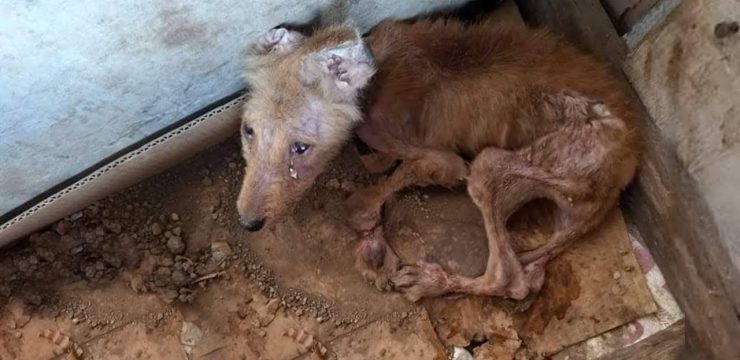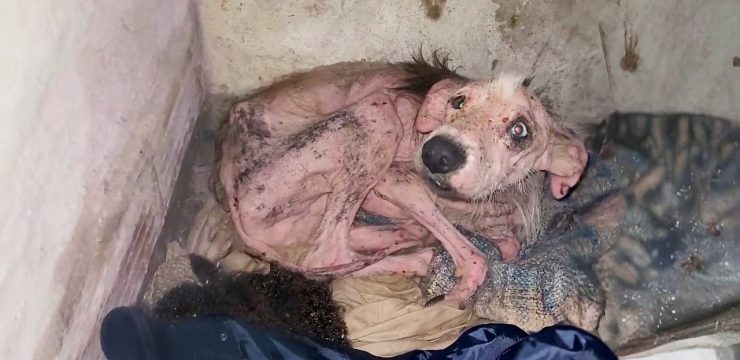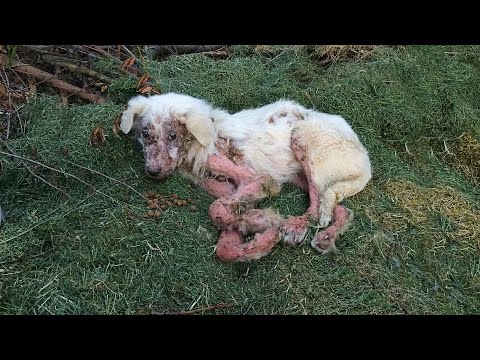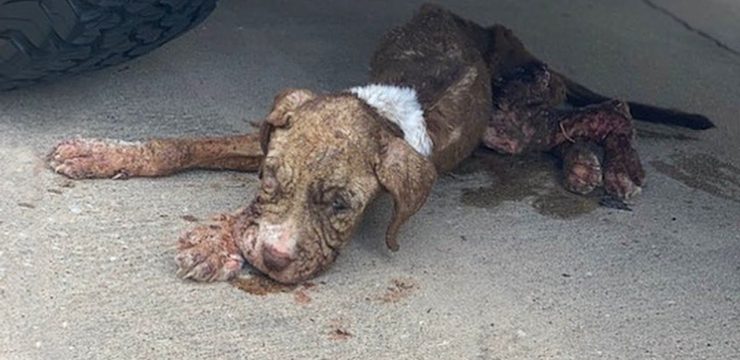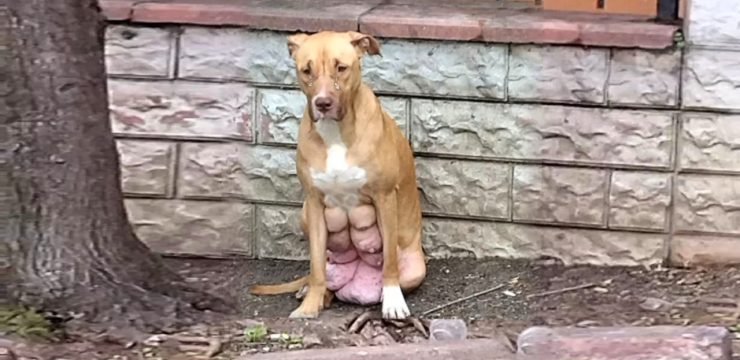We often think of cats as fiercely independent creatures, perfectly capable of taking care of themselves without much help from humans. Many of them spend hours outside, lounging in the sun, climbing trees, or exploring their surroundings. They come back home when they’re hungry, looking for food or a warm place to nap. Compared to other pets, they seem pretty low-maintenance. But that assumption can sometimes be misleading, especially when it comes to cats with certain types of fur. Some breeds or mixed-breed cats have thick, long, or dense coats that need regular grooming. Without that essential care, their fur can become tangled, matted, and over time, cause serious health problems. This was sadly the case for a cat named Hidey.
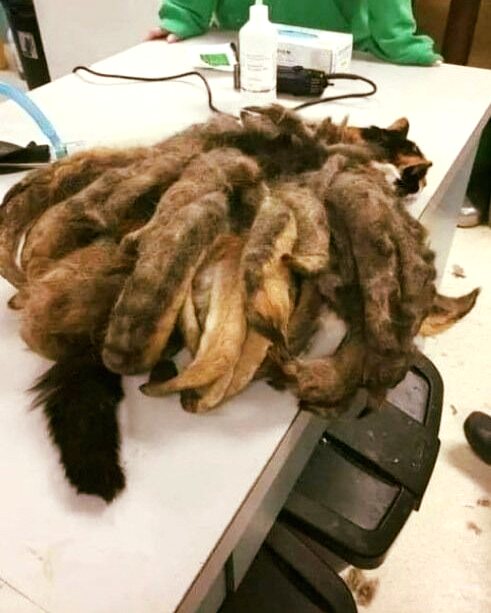
Hidey’s story is both heartbreaking and eye-opening. Her name might sound cute and playful, but the condition she was found in tells a very different tale. For years, Hidey lived in a home where she didn’t get the grooming and care she needed. Her owner, an elderly individual suffering from Alzheimer’s, was no longer capable of keeping up with her needs. As time passed, Hidey’s fur became so tangled and matted that it formed thick dreadlocks all over her body. The mats were so extensive and heavy that she eventually resembled an octopus—her once-soft coat transformed into hanging clumps of fur, each several inches long.
When her owner was moved to a nursing home, family members or caregivers who came to the house discovered Hidey and realized the urgency of her condition. They contacted the Animal Rescue League Shelter and Wildlife Center, based in Pittsburgh, Pennsylvania. Upon arrival, the rescue team was shocked by what they saw. Jenn Levitzki, a veterinary technician who helped rescue Hidey, described the condition of the cat’s fur as the worst case of matting she had ever seen. In fact, she referred to them specifically as “dreadlocks” due to how thick and rope-like the fur had become. She documented the rescue process in a video and shared it on Facebook, where thousands of people viewed and shared it, touched by Hidey’s experience.
To make the process more comfortable for Hidey, the veterinary team sedated her before removing the matted fur. This was not just a matter of aesthetics—matted fur can pull painfully on a cat’s skin, cause infections, restrict movement, and trap dirt, feces, or even insects. According to a post on the shelter’s Facebook page, some of the dreadlocks they shaved off were between six and eight inches long. When the procedure was complete, Hidey was not only physically lighter but visibly more comfortable. The shelter noted that the amount of fur removed weighed several pounds, a substantial burden for any cat to carry around.
After her rescue, Hidey didn’t return to her old home. Instead, she was placed with a distant relative of her former owner—someone who could give her the proper care and attention she deserved. This fresh start gave Hidey the chance to live in comfort and safety, surrounded by people who understood the importance of regular grooming and proper care.
Hidey’s story serves as a powerful reminder that pets, even those that appear self-sufficient like cats, need ongoing attention and love. This case was preventable. Regular brushing, routine vet checkups, and simply keeping an eye on an animal’s behavior can go a long way in maintaining their well-being. More importantly, this story also shines a light on a larger issue—the care of elderly pet owners who may no longer be able to look after themselves, let alone their beloved companions. Diseases like Alzheimer’s can severely impact a person’s ability to function day-to-day, and sometimes their pets suffer silently in the background.
It’s essential that we, as neighbors, friends, or family members, make a point to check in on our elderly loved ones. A short visit to say hello can uncover important things—like a struggling pet, an unattended health concern, or a lonely senior who could use some company. Small acts of kindness, such as helping them with errands, grooming their pets, or simply talking with them, can make a significant difference. Sometimes, just asking, “Is there anything you need help with?” can uncover problems that would otherwise go unnoticed.
If you have an elderly neighbor, consider stopping by once in a while. You don’t need a reason—just a friendly hello or a check-in can mean the world to someone who may be isolated. And while you’re there, take a look around. Is their pet active and healthy? Do they seem groomed and well-fed? Is there a litter box that needs cleaning or food bowls that are empty? These might seem like small details, but they often hint at bigger issues that deserve attention.
In Hidey’s case, the intervention came just in time. But not all animals in similar situations are as lucky. By being more aware of the people and pets around us, we can help prevent unnecessary suffering. Elderly individuals with pets often share a deep emotional bond with their animals. For many, that cat or dog is their closest companion, their daily comfort, and their emotional support. Ensuring both the person and the pet are healthy and safe is a shared community responsibility.
Hidey’s transformation from a matted, neglected cat to a comfortable, cared-for companion is heartwarming, but it didn’t happen on its own. It took attention, compassion, and action from people who chose not to look the other way. Her story reminds us that kindness can be life-changing—and sometimes even lifesaving. Please share this story, not just for Hidey, but as a call to action to keep an eye out for the elderly and their pets. You never know what someone might be going through unless you take the time to ask.

